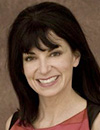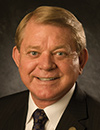Hiding in Plain Sight
/ GUEST BLOGGER
GUEST BLOGGER
Diane Burley
Chief Content Strategist, MarkLogic
During International Fraud Awareness Week, I’m reminded that illusionists are masters at manipulating our attention – using slight-of-hand, they have us focus intently away from where the trick is being played out. Skilled perpetrators of fraud do essentially the same thing. They know instinctively, if not cognitively, that the human brain is wired so that as it focuses on one set of information, it must shut out other information.
That’s why it was so easy for two business partners from Houston, with the aid of their wives, to steal more than $5 million in a health care fraud. The men founded a Houston-based home health care company and said they provided skilled nursing to Medicare beneficiaries, including home-bound patients.
On the surface, it all looked legitimate. And, there are many legitimate operations just like these all over the country. But, in fact, the health care group’s patients were not homebound, nor did they need (or receive) skilled nursing services. Yet they billed Centers for Medicare and Medicaid Services (CMS) and received payment for those non-services.
Catching these kinds of frauds has been near impossible for forensic accountants and investigators, because their actions, albeit criminal, look so reasonable — which is how, according to the FBI, CMS alone is bilked of $80 billion each year. Forensic accountants are trained to look for anomalies: Is a bill excessively high? Is the same amount being processed over and over and over again? Is the number of patients for a single practitioner realistic?
Uncovering fraud requires a highly honed set of skills that combines both the art of knowing how to find patterns and using technology to do the heavy lifting. Highly trained individuals – even highly trained machines – can’t spot ersatz charges when transactions are perceived to be like all the other claims. And spotting the illusion — and stopping it — has been a big problem for CMS and virtually every organization in every industry. Until now.
We implemented an enterprise NoSQL database for CMS, and they were astounded at the ease with which each new external dataset could be added. By eliminating the need for modeling data, CMS was able to increase the odds in its favor to interrupt and catch this fraud earlier next time. Our technology allowed the focus and examination to be put on the right information – not the illusion the criminals had created.
During Fraud Week, it’s nice to share a success story that shows how new technology can be an effective weapon in the fight against fraud.
